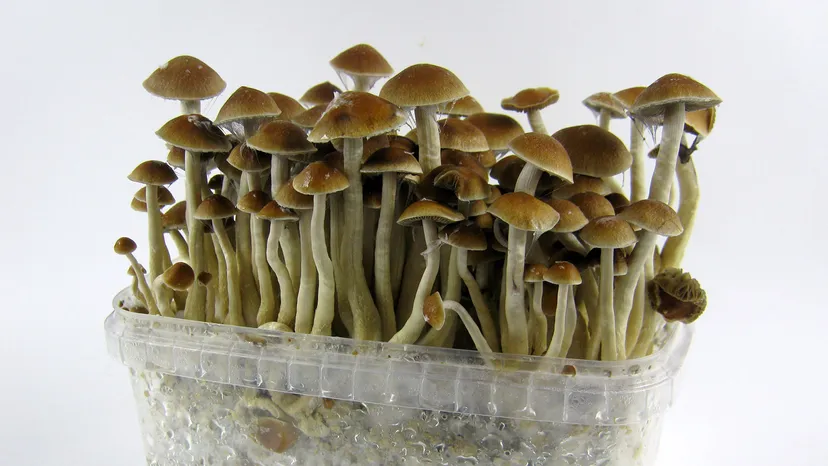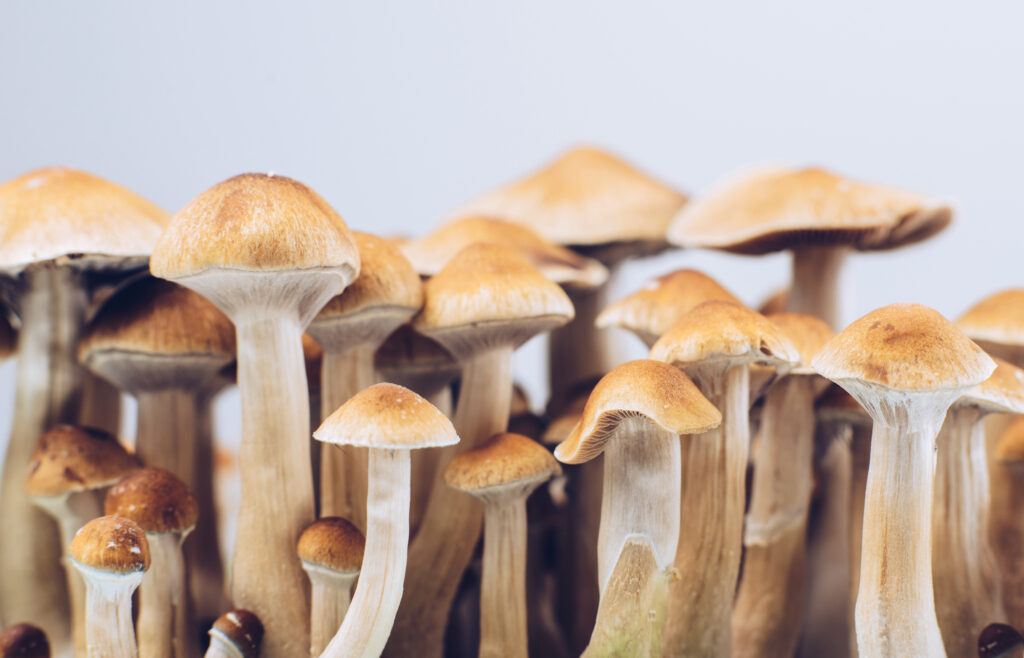Introduction
Magic mushrooms, known scientifically as Psilocybe species, have long fascinated humans with their psychoactive properties. These fungi are most commonly associated with wet, rainy seasons, where they seem to flourish in abundance. Understanding why magic mushrooms thrive in wet weather involves delving into the intricacies of their biology, their ecological role, and the environmental conditions that favor their growth. In this blog post, we’ll explore the scientific reasons behind the proliferation of magic mushrooms during the rainy season.
The Biology of Magic Mushrooms
These spores remain dormant until they encounter favorable conditions.

1. Understanding Fungal Life Cycles
Magic mushrooms, like all fungi, have a unique life cycle that includes spore production, germination, mycelial growth, and fruiting. Spores are the reproductive units of fungi, analogous to seeds in plants. These spores remain dormant until they encounter favorable conditions, such as the moisture and nutrients provided by wet weather.
2. Mycelium: The Hidden Network
The main body of the fungus, the mycelium, is a network of thread-like structures called hyphae that spread through the substrate, which can be soil, decaying wood, or other organic matter. The mycelium is responsible for nutrient absorption and plays a critical role in the decomposition process. During the rainy season, the increased moisture content in the environment helps the mycelium grow and expand, setting the stage for fruiting.
Environmental Conditions Favoring Fungal Growth
1. Moisture and Humidity
Water is a crucial factor for fungal growth. Magic mushrooms require a humid environment to thrive. Rain provides the necessary moisture that helps spores germinate and supports the development of the mycelium. High humidity levels during the rainy season ensure that the substrate remains moist, promoting the growth of the fungal network.
2. Temperature and Seasonal Changes
Temperature also plays a significant role in the growth of magic mushrooms. Most Psilocybe species prefer mild to warm temperatures, typically ranging between 15°C to 30°C (59°F to 86°F). The rainy season often coincides with these temperature ranges, creating an ideal environment for mushroom development. Seasonal changes that bring rain and moderate temperatures signal to the mycelium that it is time to produce fruiting bodies.
The Role of Organic Matter
1. Decomposition and Nutrient Cycling
Magic mushrooms are saprotrophic, meaning they feed on decaying organic matter. The rainy season accelerates the decomposition process of leaves, wood, and other organic debris, enriching the soil with nutrients. This abundance of organic material provides a rich food source for the mycelium, enabling it to grow robustly and eventually produce mushrooms.
2. Symbiotic Relationships
Some magic mushrooms form symbiotic relationships with plants, particularly trees. These mycorrhizal associations benefit both the fungus and the host plant. The fungus helps the plant absorb water and nutrients from the soil, while the plant provides the fungus with carbohydrates produced through photosynthesis. The rainy season enhances soil moisture, facilitating these symbiotic interactions and promoting mushroom growth.
The Ecological Significance of Magic Mushrooms
1. Decomposers of the Ecosystem
Magic mushrooms, like other fungi, play a crucial role in ecosystems as decomposers. They break down complex organic materials into simpler substances, recycling nutrients back into the soil. This process is vital for maintaining soil health and fertility, especially during the rainy season when organic matter accumulates rapidly.
2. Biodiversity and Fungal Communities
The rainy season not only supports the growth of magic mushrooms but also promotes overall fungal biodiversity. Wet conditions encourage a diverse array of fungi to thrive, contributing to the ecological balance. This diversity is essential for healthy ecosystems, as different fungi fulfill various ecological roles.
The Impact of Wet Weather on Psilocybin Production
1. Chemical Composition of Magic Mushrooms
Magic mushrooms contain psilocybin, a naturally occurring psychoactive compound. The production of psilocybin is influenced by environmental factors, including moisture and temperature. Studies suggest that mushrooms grown in optimal conditions, such as those provided by the rainy season, tend to have higher concentrations of psilocybin.
2. Stress and Psilocybin Synthesis
Environmental stressors, such as fluctuations in moisture and temperature, can impact the synthesis of psilocybin. During the rainy season, the consistent moisture levels help reduce stress on the mycelium and fruiting bodies, potentially leading to more stable and higher levels of psilocybin production.
Foraging Magic Mushrooms in the Rainy Season
1. Identifying Magic Mushrooms
Foraging for magic mushrooms requires careful identification, as many look-alike species can be toxic. The rainy season is prime time for foraging due to the abundance of mushrooms. Key identification features include the cap shape, color, gill structure, and spore print. Psilocybe species typically have brown to golden caps, dark gills, and a characteristic blue bruising when handled.
2. Safety and Legal Considerations
While foraging can be an exciting activity, it is essential to consider safety and legality. Always research local regulations regarding the collection and use of magic mushrooms, as they vary widely by region. Additionally, proper identification is crucial to avoid accidental poisoning from toxic species.
Conclusion
The rainy season creates an optimal environment for the growth of magic mushrooms through a combination of moisture, moderate temperatures, and abundant organic matter. Understanding the biological and ecological factors that contribute to their proliferation helps us appreciate the complex interactions between fungi and their environment. Whether you are a mycologist, forager, or simply curious about the natural world, the science behind why magic mushrooms thrive in wet weather offers a fascinating glimpse into the wonders of fungal life.
By appreciating the conditions that favor the growth of these extraordinary fungi, we can better understand their role in ecosystems and the unique experiences they provide. So, the next time the rain falls, take a moment to consider the hidden world of magic mushrooms that comes to life beneath your feet.

